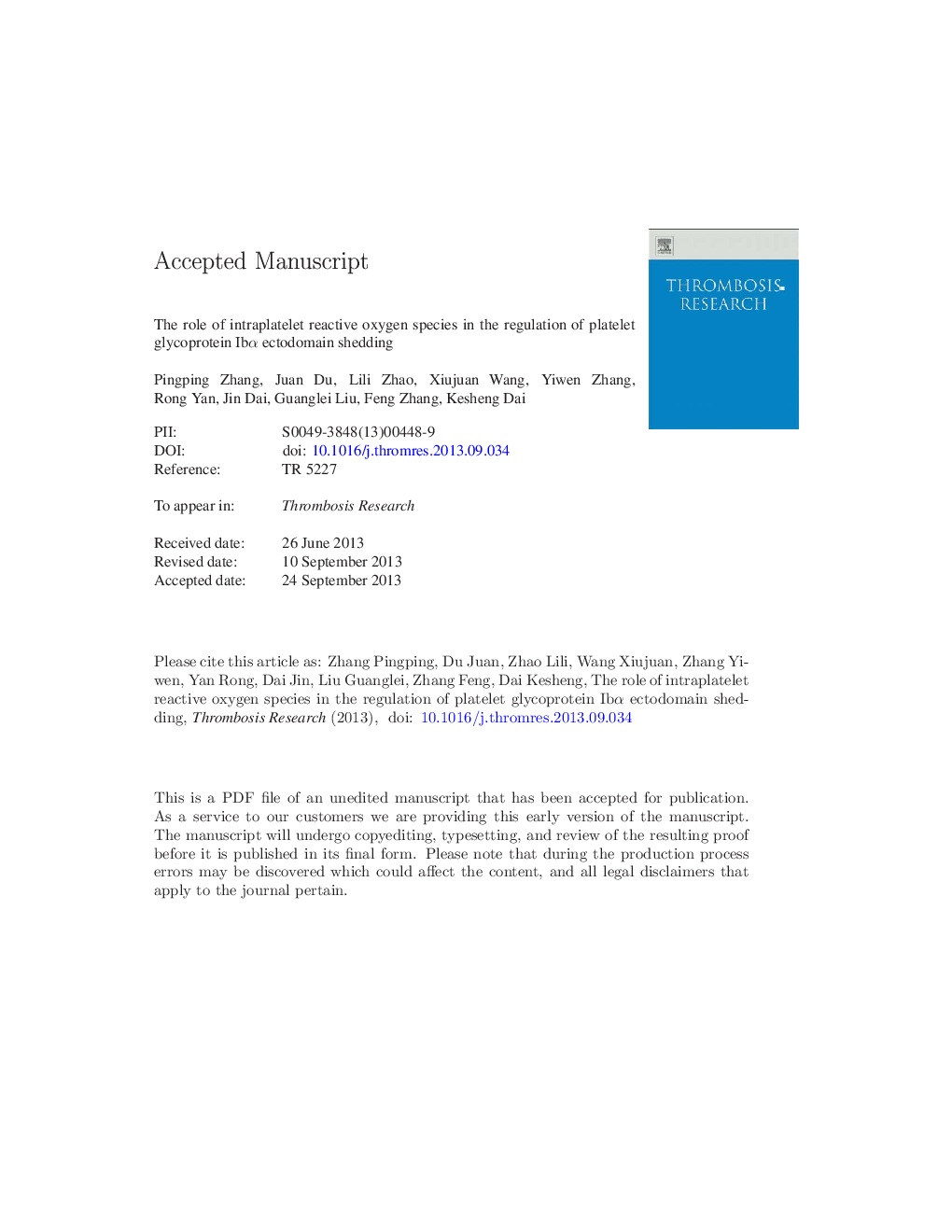| Article ID | Journal | Published Year | Pages | File Type |
|---|---|---|---|---|
| 6001922 | Thrombosis Research | 2013 | 21 Pages |
Abstract
Glycoprotein (GP) Ibα ectodomain shedding has become a generally accepted negative regulatory mechanism of platelet function. Stimulation of platelet with either physiological or chemical compound results in GPIbα ectodomain shedding in vitro and in vivo, the mechanism, however, is not totally understood. Here we show, collagen, thrombin, and calcium ionophore A23187 induce reactive oxygen species (ROS) generation, and simultaneously incur GPIbα ectodomain shedding. ROS scavengers N-acetylcysteine (NAC) and dithiothreitol (DTT) abolish not only collagen, thrombin, and A23187 induced ROS production, but also GPIbα ectodomain shedding. Interestingly, a recognized calpain activator, dibucaine, induces both ROS production and GPIbα shedding, which are also obviously reduced by NAC and DTT. Furthermore, calpain inhibitors calpain inhibitor I and carbobenzoxy-valinyl-phenylalaninal, obviously reduce dibucaine, thrombin, and A23187-induced ROS generation. These data indicate that ROS plays a key role in collagen, thrombin, and A23187-induced GPIbα ectodomain shedding. Calpain is an up-stream regulator that regulates ROS-mediated GPIbα shedding.
Keywords
N-(6-aminohexyl)-5-chloro-1-naphthalene sulfonamideDCFHvWFDCFH-DAMDLNACN-ethylmaleimidedichlorofluoresceinDTTACDDcfADAM17FITCglycoprotein IbαPhorbol 12-myristate-13-acetateDMSOPMAN-acetylcysteineROSANOVAone-way analysis of varianceA disintegrin and metalloproteinase 17Room temperaturedithiothreitolDimethyl sulfoxideSheddingVon Willebrand factorfluorescein isothiocyanateNEMPlateletsCalpainGlycoproteinglycocalicinReactive oxygen species (ROS)Reactive oxygen species
Related Topics
Health Sciences
Medicine and Dentistry
Cardiology and Cardiovascular Medicine
Authors
Pingping Zhang, Juan Du, Lili Zhao, Xiujuan Wang, Yiwen Zhang, Rong Yan, Jin Dai, Guanglei Liu, Feng Zhang, Kesheng Dai,
